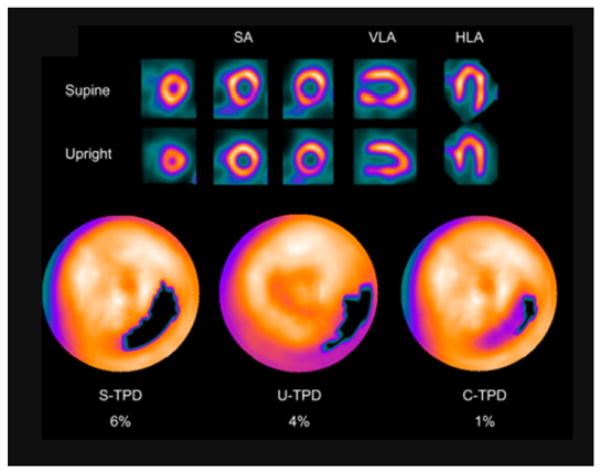Figure 2.
Two-position imaging in Fast Myocardial Perfusion Imaging with Single Photon Emission CT (MPS). An example of inferolateral wall supine and upright MPS artifact images from a 49-y-old woman with typical chest pain and known hypertension, diabetes, hypercholesterolemia, and family history of premature CAD. The images are displayed in 3 short-axis (SA) views and in vertical long-axis (VLA) and horizontal long-axis (HLA) views. Electrocardiogram response to exercise was nonischemic for ST-segment depression. Poststress supine and upright images show reduced uptake of radiotracer in the inferolateral wall (top and middle rows). Blackout maps (bottom row) give quantification results of 4% for U-TPD and 6% for S-TPD. When supine and upright images are combined, only a small defect is visualized on black-out map, with C-TPD of 1%. The subsequent coronary angiogram showed no significant stenosis. This research was originally published in JNM. Nakazato et al. Quantitative upright-supine high-speed SPECT myocardial perfusion imaging for detection of coronary artery disease: correlation with invasive coronary angiography. J Nucl Med. 2010;51(11):1724–31. © by the Society of Nuclear Medicine and Molecular Imaging, Inc. [11]

